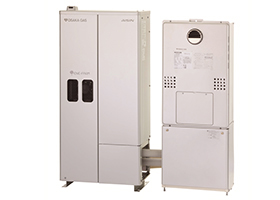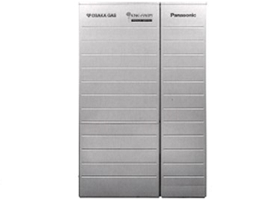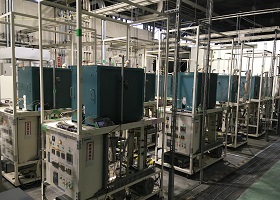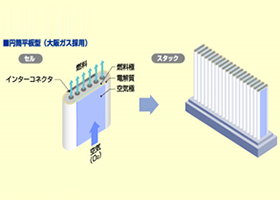Fuel Cell systems
Polymer Electrolyte Fuel Cell (PEFC) System
Types of Fuel Cells
Fuel cells are divided into various types according to the electrolyte (which separates the anode from the cathode) and the operating temperature.
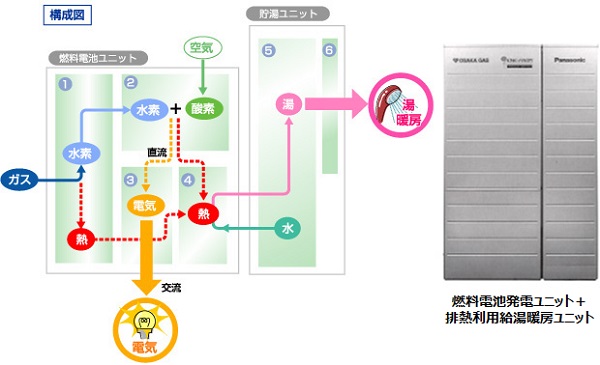
Of the residential fuel cell cogeneration systems available from Osaka Gas, Ene-Farm employs polymer electrolyte fuel cells (PEFCs) and Ene-Farm Type S employs solid oxide fuel cells (SOFCs).
Configuration of and Devices Used in Fuel Cell Cogeneration Systems
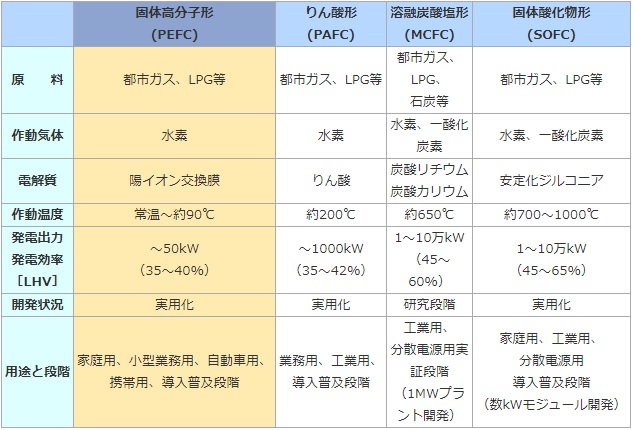
Components and Functions
① Fuel reformer
The fuel reformer extracts hydrogen from natural gas.
■ What is a fuel reformer?
The main component of our city gas is methane (CH4). A fuel reformer produces hydrogen (H2) for fuel cells through chemical reaction of methane in a reformer.
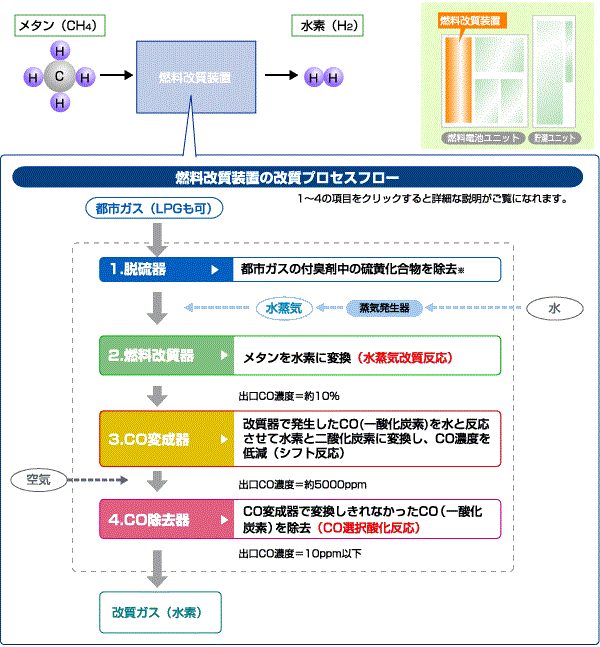
* When supplying city gas, an odorant containing sulfur compounds is added to the source gas, which is natural gas, for safety reasons.
② Cell stack
A cell stack generates direct current electricity, using hydrogen and oxygen in the air.
■ Power generated by a single cell
A single PEFC generates several hundred millivolts.
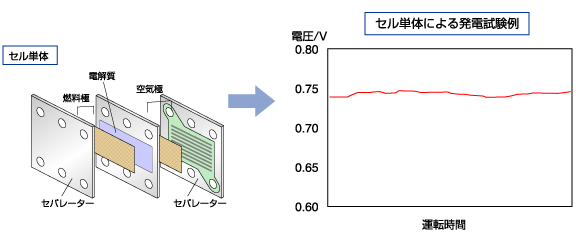
■ Power generated by a cell stack
Because the voltage generated by a single fuel cell is too low for household use, in a fuel cell product, dozens of single cells are stacked to generate a high voltage. (The configuration is called a cell stack.)
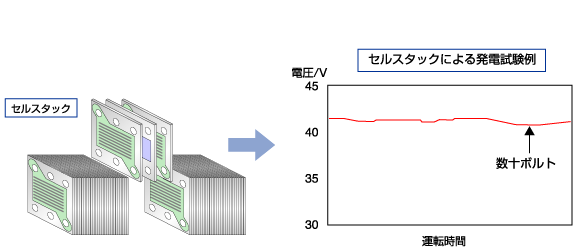
③ Inverter
An inverter converts generated direct current electricity to an alternating current for use in the home.
④ Heat exchangers
Heat exchangers recover heat from the cell stack and fuel reformer to produce hot water.
⑤ Hot water storage tank
A hot water storage tank stores recovered hot water and supplies it to meet water heating and room heating needs.
⑥ Backup heat source unit
In the event of a shortage of hot water in the hot water storage tank, gas is used to heat water.
Related contents
TAG SEARCH
- Evolving residential gas appliances
- Evolving residential gas appliances Water heaters, space heaters, dryers Cooking appliances Smart Equipment Fuel Cell systems
- Evolving commercial and industrial gas appliances
- Evolving commercial and industrial gas appliances Cogeneration (CHP) units Air conditioning systems, kitchen appliances Bio, water treatment Industrial furnaces, burners Energy management, IoT
- Enhancing the safety and economic efficiency of LNG regasification
- Enhancing the safety and economic efficiency of LNG regasification Utilization of cold energy Plant materials Power generation technology
- Developing next-generation businesses through enterprising initiatives
- Developing next-generation businesses through enterprising initiatives Materials development Measurement Simulation, data analysis Food science Material evaluation
- Contributing to conserving the environment and achieving a carbon neutral society
- Contributing to conserving the environment and achieving a carbon neutral society Methanation Hydrogen, ammonia Biogas Energy management Renewable Energy
- Technologies of Group companies
- KRI, Inc. Osaka Gas Chemicals Group OGIS-RI Group

